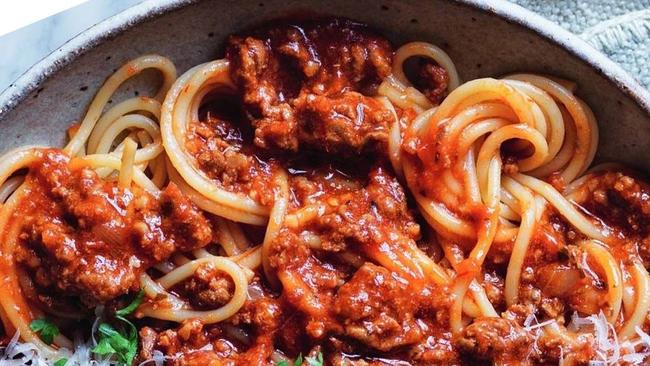Dr Karl shares his sciency secret to perfect spag bol
His signature dish happens to be mine too, so we’re practically besties.


We were lucky enough to talk to Dr Karl about all things food and science – exciting stuff for us food nerds!
He enlightened us to the knowledge that his signature dish is spaghetti bolognese (great choice) and even gave us a sciency secret to the perfect spag bol.
So what’s his secret? The ‘Maillard’ reaction.
What is the Maillard reaction?
The Maillard reaction is a chemical reaction in food that occurs when a reducing sugar (eg. glucose, lactose or fructose) reacts with an amino acid (the building blocks of protein) through heat. The sugars and proteins are transformed into new flavours, aromas and colours – particularly that golden brown goodness we’re all drawn towards.
Every time you cook sear meat, make toast or bake afternoon tea, you use the Maillard reaction (feel free to put food scientist on your resume).
While the Maillard reaction and caramelisation often overlap in cooking, they are different chemical reactions. Caramelisation is the pyrolysis of sugar, basically the decomposition of sugar through heat.
RELATED VIDEO: Try our best-ever spaghetti bolognese recipe
How Dr Karl uses the Maillard reaction in cooking
When Dr Karl makes his signature spag bol, he fries the mince in batches until it undergoes the Maillard reaction.
He says: “It’s my ‘cooked enough’ indicator. I put the lid on and once the bits of mince start hitting the lid, I know I’ve fried them enough and the meat has undergone the Maillard reaction… and they’re delicious. Put the first batch aside and do another batch and another batch.”

“Then the crucial element is time”, says Dr Karl
We’ve heard it time and time again but a good bolognese takes hours. Dr Karl adds the fried onions and garlic back into the pot, along with the meat and “shirtloads of tomatoes” and the final ingredient is… time (no, not thyme). He cooks his bolognese for hours and hours and hours… and hours.
Dr Karl explains: “First couple of hours, you stir so it doesn’t stick, then you let a bit of stickiness happen on the bottom – a little bit of burny stuff but not too much, bare minimum.”
“At around the four-hour mark, it goes dark, the colour gets darker, and the volume really drops. At this stage, everyone gets bored and wants to eat it. If I’m by myself I cook it for another couple of hours and it gets more delicious.”
But if all fails you can go the opposite route.
“You get meat, pour over tomato sauce, put it on pasta and call it bolognese… but no, that’s not bolognese”, says Dr Karl.
Who knew spag bol could be so scientifically interesting…

Originally published as Dr Karl shares his sciency secret to perfect spag bol


